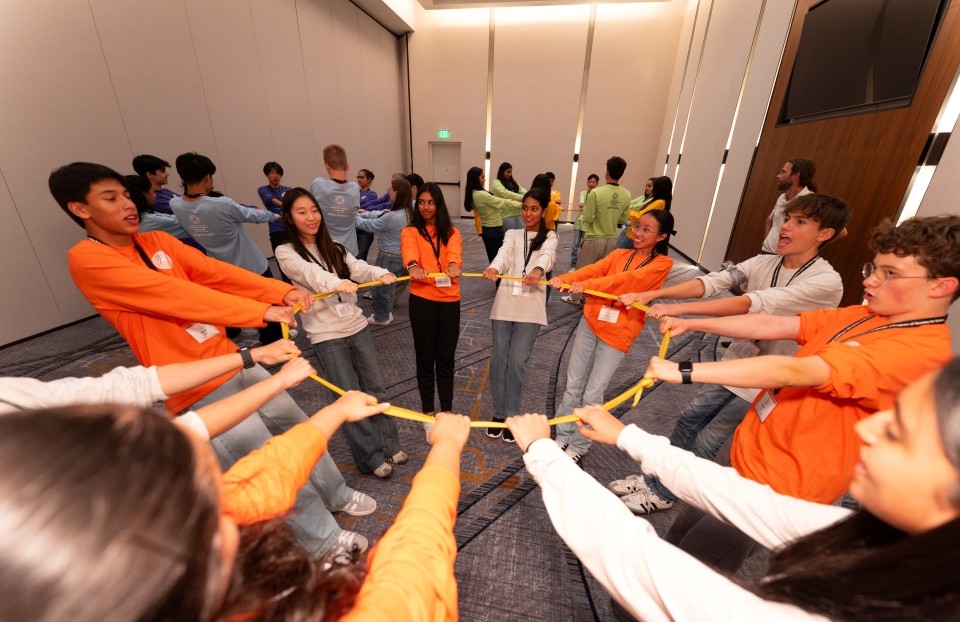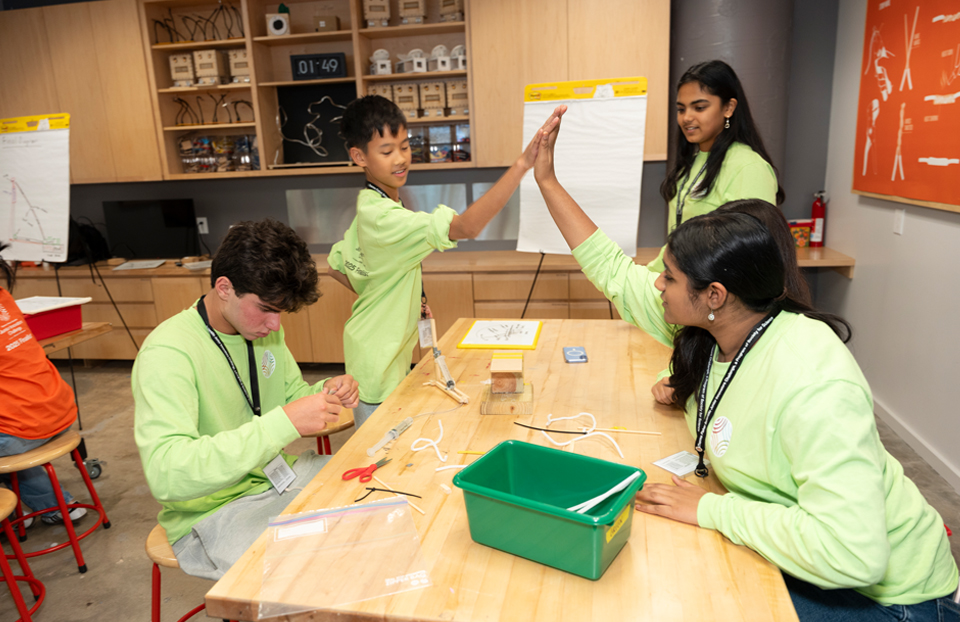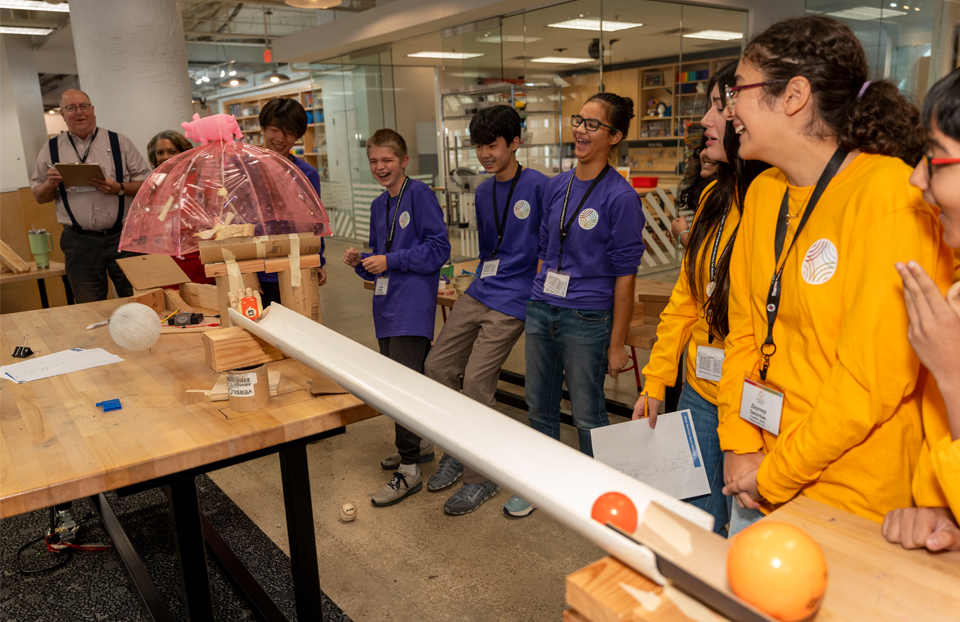From orange peel gels to Martian dust shields, the Thermo Fisher JIC 2025 begins in D.C. with the Top 30 Finalists’ Project Showcase
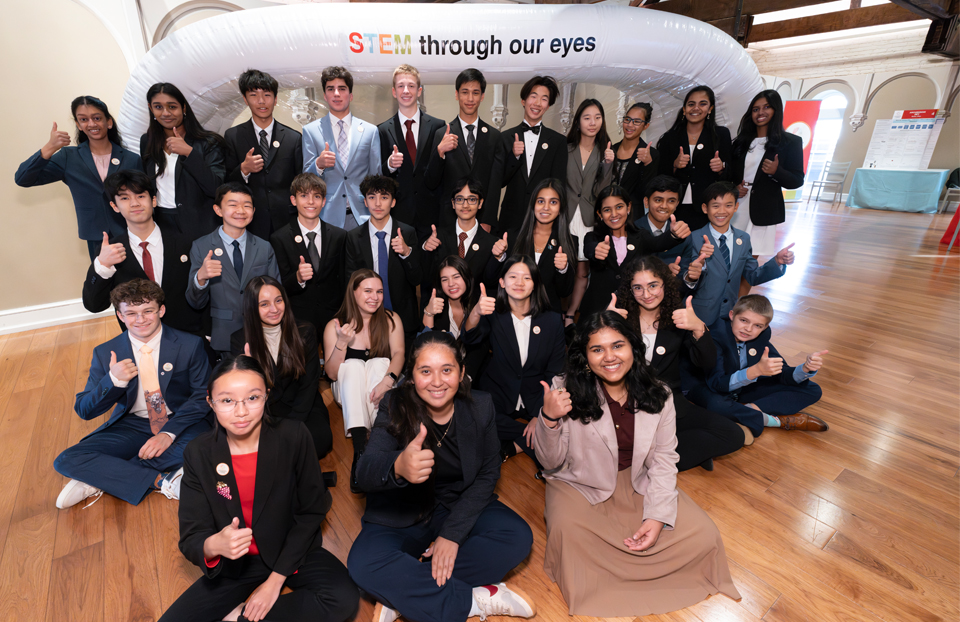
The moment they’ve all been waiting for is finally here!
The Top 30 finalists in the 2025 Thermo Fisher Scientific Junior Innovators Challenge (Thermo Fisher JIC) are here in Washington, D.C., taking part in the nation’s premier science competition for middle school students. Dressed in their best, the finalists gathered Saturday at the Planet Word Museum to present their research to judges and the public at the Science and Engineering Project Showcase. After a night of teaming up and befriending their STEM peers, the students returned with their project boards to compete for more than $100,000 in prizes.
At the Public Exhibition, we caught up with six finalists and learned more about their research. With projects covering a wide range of topics, the students were filled with a mix of nerves and excitement as the competition week started!
Rajsi Choudhary, 14, from Riverside, Conn., drew inspiration for her project from a mango tree in Ahmedabad, India, where she was born. Her energy and sustainability project, Thermo-Responsive Orange Peel Hydrogel for Moisture Retention in Soil, explores a better way to hydrate crops and maintain moisture using less water. She shares that crops like corn require 9,000 gallons of water per acre per day, and she estimates her orange peel gel could potentially save 1,134 gallons per day.
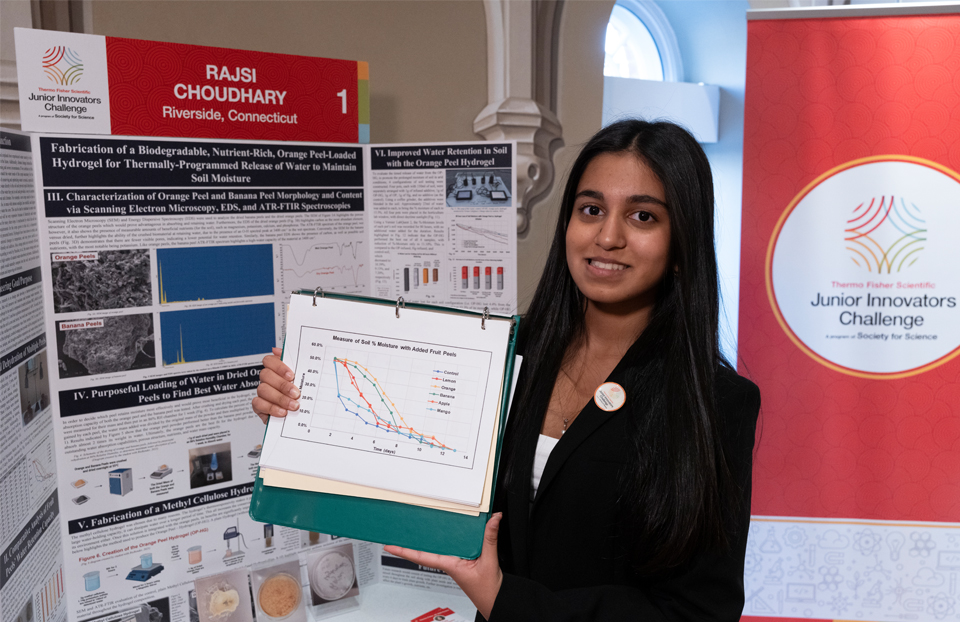
“I would love to experiment further with this project,” Rajsi says. “I want to test how it will promote crop growth. What essential nutrients does it provide to the soil? How often would the orange peel need to be replenished in the soil? There’s so much work to be done, and I can’t wait to begin.”
Alice Feng, 13, of Fresno, Calif., explored how we could make the most out of the food we eat in her research project. Growing up in the Central Valley, Alice noticed the diverse offerings of the region’s agriculture and learned that it produces 75 percent of the state’s wine. Though this was a cool fun fact, this also meant that the region generated large amounts of grape pomace waste. Her project investigated creating oil from this waste, giving farmers the opportunity to profit from both wine and oil production.
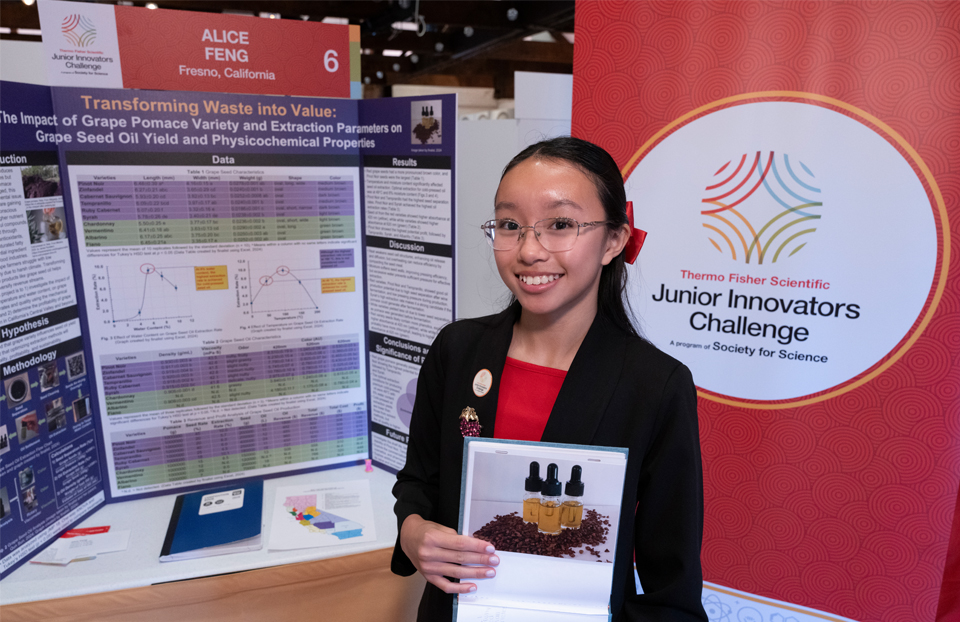
“I was really surprised when I found that cold-pressed oil from Pinot Noir seeds could generate about $1,500 in profit,” Alice says. “Central Valley produces 2.6 million tons of pomace per year; that’s per ton of pomace! That’s a lot of money and could be a new source of income for farmers.”
From Ponce, Puerto Rico, Camila Gonzalez-Thompson, 14, was concerned about public health in her hometown and is investigating ways to reduce the burden of dengue, a disease impacting many areas of the world, including Puerto Rico. Testing blood samples from local residents, Camila found that people over 50 had more IgG antibodies, indicating they had had dengue infections in the past. Individuals younger than 50 had IgM antibodies, indicating a first-time exposure.
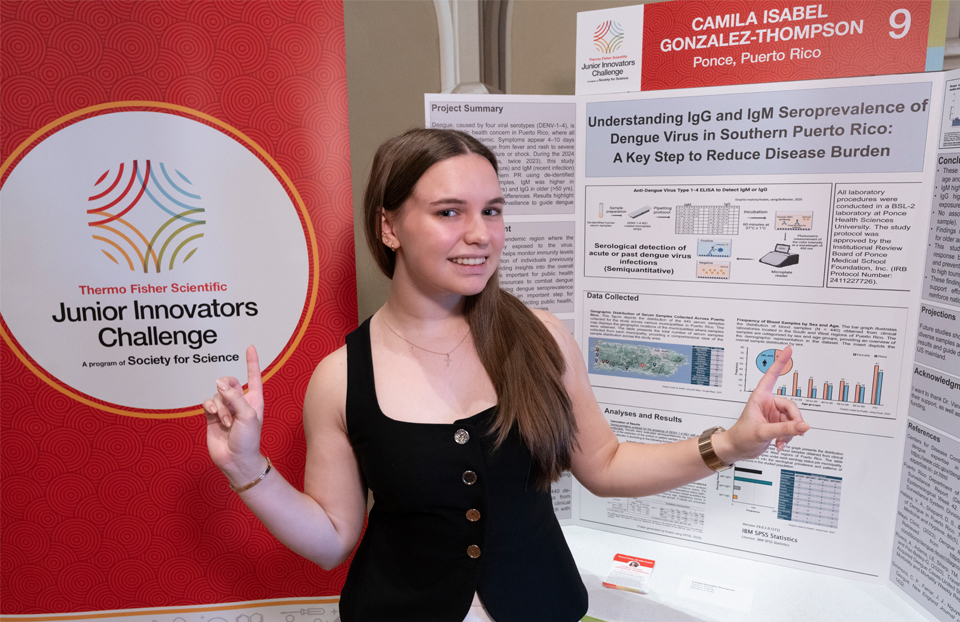
“You really have to take it one step at a time,” Camila says when giving advice to other students. “Getting overwhelmed is one of the easiest ways to fail.”
Owen Thomas McGeeney Park, 14, of Louisville, Kentucky, developed a physics project focused on reducing the buildup of loose rocks and dust, known as regolith on Mars. While the use of an electrodynamic dust shield (EDS) is not new, Owen tested whether a low-voltage EDS could be a more efficient alternative for Martian conditions. He found that at even very low voltages, which are significantly less expensive to power on Mars, his design was able to repel more than 70 percent of dust in both Earth and simulated Martian environments.
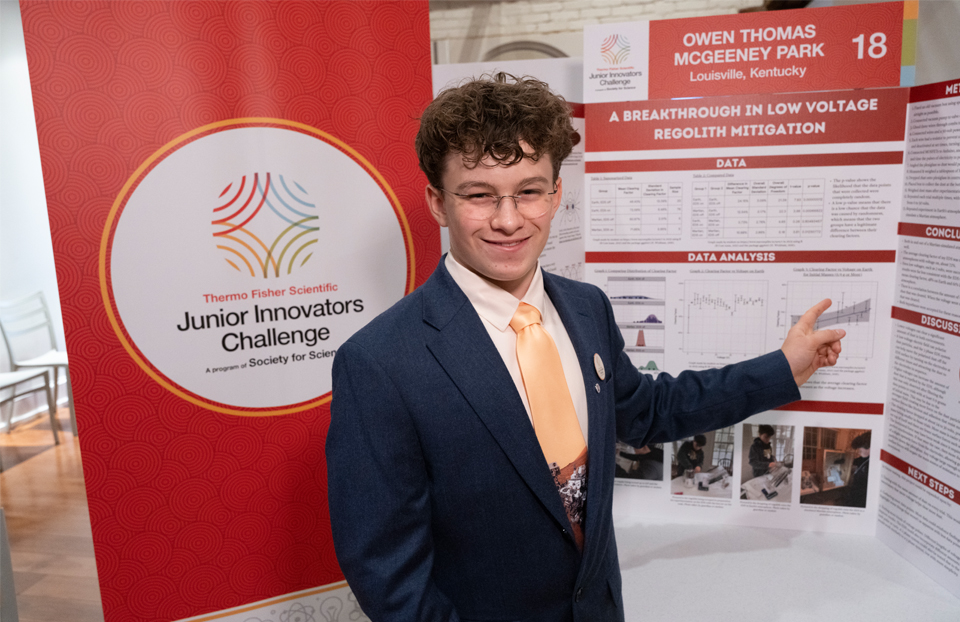
“Don’t give up,” Owen encourages his fellow young scientists. “It took two days before I got measurable results. I was 100% convinced that my project was not going to go anywhere. I was sure of it, but I decided that I was going to still try to get some data, no matter what the chances were, and I ended up getting measurable data.”
Drone pilot, Luca McGill, 14, of Tucson, Ariz., became interested in monitoring atmospheric carbon dioxide after a summer trip to Germany, where guests were warned about air pollution while wading in an outdoor pool. This prompted him to become more curious and examine the air quality in his hometown. He used a drone to take measurements and found that rural areas had the highest CO₂ levels close to the ground, while urban areas showed relatively even CO₂ concentrations across altitudes. Suburban areas, he discovered, had elevated CO₂ levels at both high and low altitudes, with a dip in the middle.
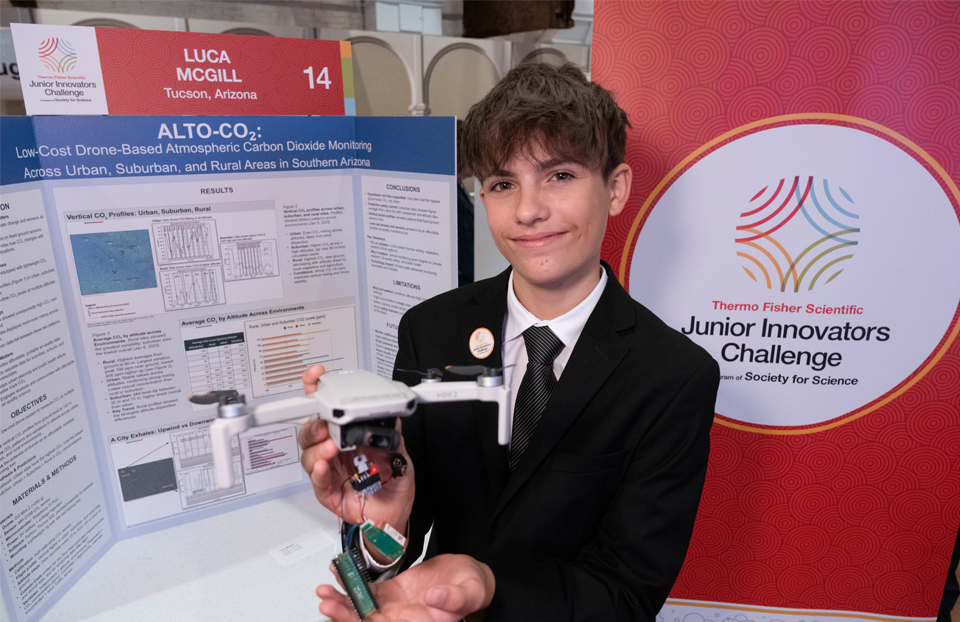
“It feels unreal to be here,” Luca says. “It’s going great, and I love my team.”
Meanwhile, Sanhita Tummala, 14, from Brookings, S.D., is thinking about women around the world and pregnancy in her microbiology project. Her project is a kit aimed at combating rural vitamin A deficiency, especially during pregnancy and early childhood. Sanhita wondered if she could create a way for people to produce their own vitamin A at home. She developed a fermentation kit to produce beta-carotene, a precursor to vitamin A, using a microbe called Blakeslea trispora in tapioca.
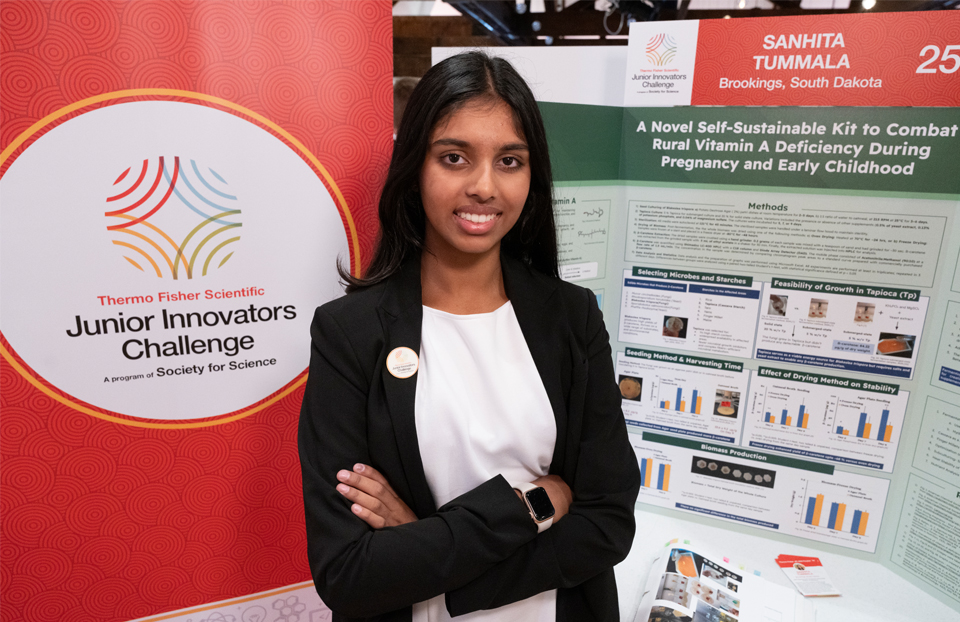
“It feels really nice to see my work actually being recognized,” Sanhita says. “Meeting other people with the same goal, to make the world a better place, is really motivating.”
Stay tuned for the Thermo Fisher JIC winners’ announcement this upcoming Tuesday evening, October 28, 2025. Learn more about all the finalists and their projects here.
